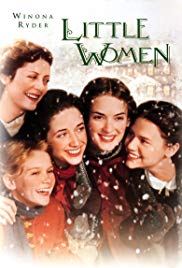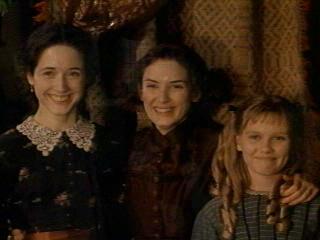Scarlet fever is a highly infectious disease caused by a strain of the streptococcus bacterium. It gains entrance to the body through the nose or mouth by exposure to droplets from the coughing or sneezing of infected individuals. It can also be spread through direct contact or from using infected utensils. Scarlet fever usually strikes children between the ages of two and ten.
Before the advent of antibiotics, scarlet fever was often fatal. It was viewed with alarm by public health officials. Families in which one member had scarlet fever would, as shown in the movie, immediately send uninfected children away. People with scarlet fever were often quarantined so that the disease would not spread. In modern times, quarantine and removal of susceptible individuals is no longer necessary. A person with scarlet fever is given antibiotics and family members are watched or tested to make sure they don’t catch the disease.
People who survive scarlet fever which has not been promptly treated with antibiotics can develop rheumatic fever. Damage from rheumatic fever includes swelling in the heart and scarring of the heart valves. In serious cases, such as Beth’s, the heart valves malfunction and eventually, over several years, the patient weakens and dies.
Some nonpathogenic strains of streptococcus bacteria are used to ferment cheese or buttermilk.
While battle wounds have always been serious, they were particularly threatening in wars before modern methods of treatment and sanitation. During the Civil War, medical care was still crude, doctors did not know how infection spread and antibiotics would not be known for another 80 years. As a result, a high proportion of wounds became infected and proved fatal. This is why the family felt so threatened when the father was wounded.
“Transcendentalism” is a philosophy which holds that there is a higher reality that transcends anything that can be experienced by the senses or comprehended by human reason. Plato, the Greek philosopher, taught that there was absolute goodness which defied human description and that the essence of reality was beyond human comprehension. In the 18th century Emmanuel Kant, a German philosopher, contended that men couldn’t prove or disprove the existence of God because God transcended human experience. Jo’s German friend, the immigrant philosophy professor, was familiar with Kant. He thought that he could find common ground with Jo when she told him that she knew about transcendentalism.
In the United States, the Transcendental Movement, which began in Boston in the early 1800s, was both a literary and a philosophical movement. It was quite different from German Transcendentalism. Ralph Waldo Emerson and Henry David Thoreau are the best-known founders of this movement. Louisa May Alcott’s father, Bronson Alcott, was a well-known educator and also a founder of the American Transcendentalist Movement.
The American Transcendentalists focused on the rejection of New England’s Puritan religious attitudes (see Hawaii) and the strict ideologies of the established religions. They found their inspiration in nature and intuition. For an American Transcendentalist, divinity permeated everything: objects, animals, and forces of nature. Transcendentalists extolled creativity and felt that through mysticism and union with nature anyone could establish a relationship with the “Over-Soul.” The current beliefs of many Americans owe much to the American Transcendentalists.
Louisa May Alcott (1832 – 1888) was an author of popular semi-autobiographical books about children. As a child, she was tutored by Ralph Waldo Emerson and Henry David Thoreau. In addition to Little Women her books include Little Men and Jo’s Boys. All are considered classics.



